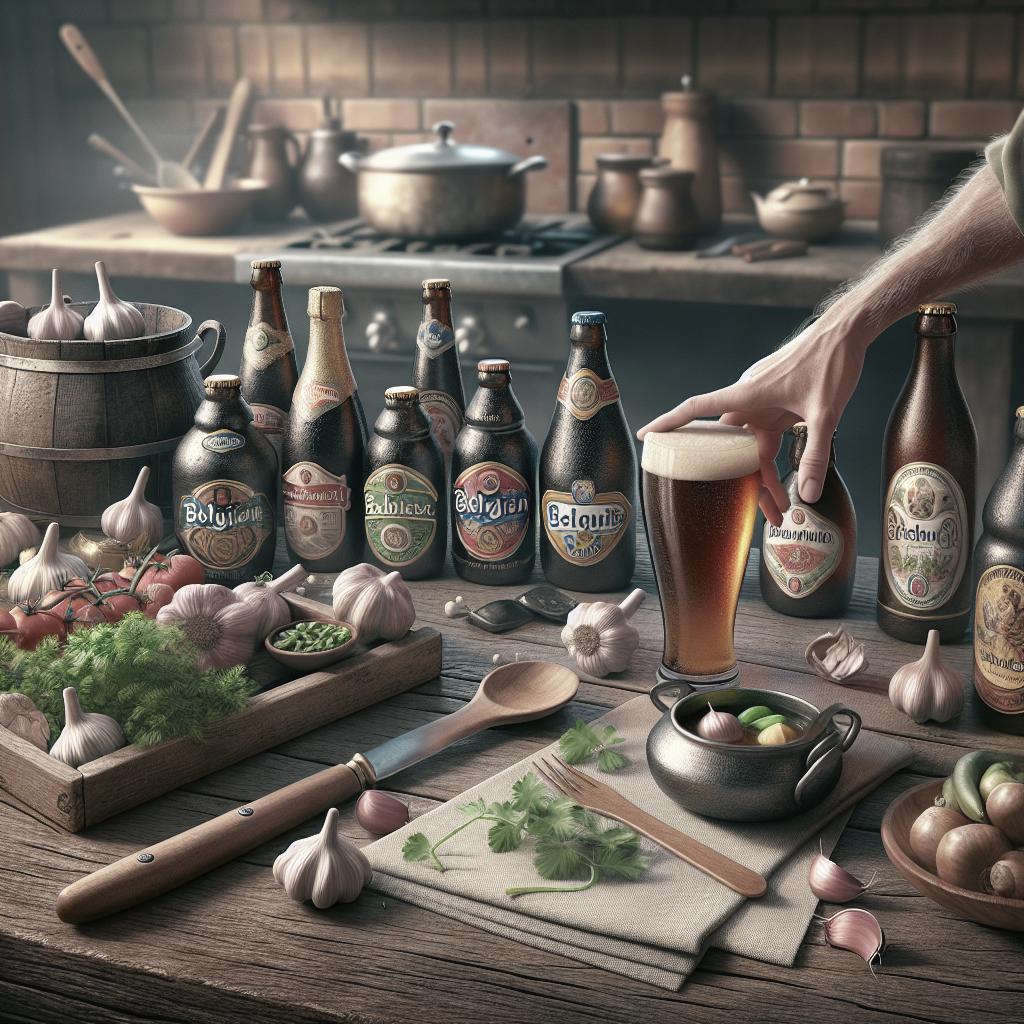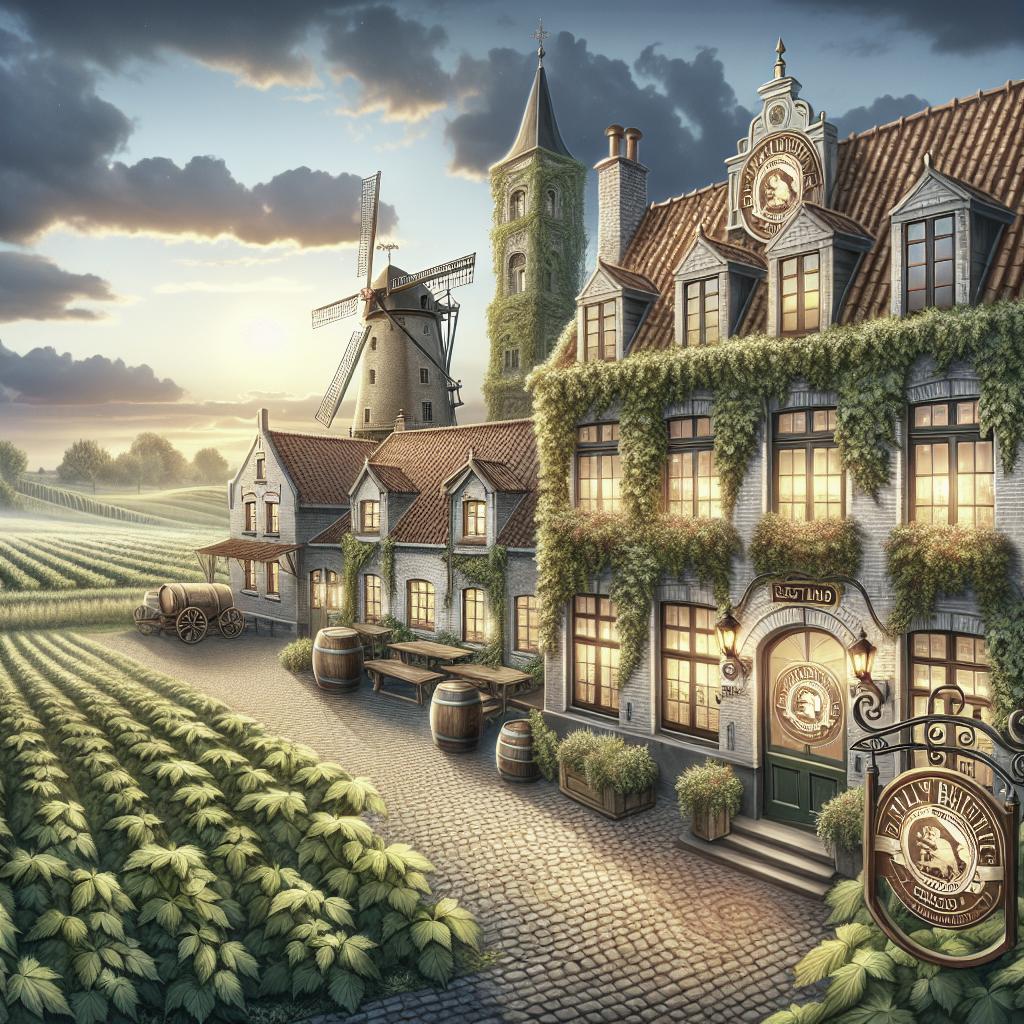“`html
Selecting the Right Belgian Beer for Cooking
Belgian beer offers a diverse range of flavors and aromas that can significantly enhance your culinary creations. Whether you’re simmering a savory stew, crafting a delicate sauce, or baking a decadent dessert, the unique qualities of Belgian beer can add complexity and depth to your dishes. This guide will explore different styles of Belgian beer and how they can be a perfect match for various cooking techniques and recipes. From robust Abbey ales to refreshing Witbier, understanding the nuances of each style will enable you to select the right beer for your next culinary endeavor.
Abbey Ales
Abbey ales are richly flavored beers that are often brewed by monastic breweries or bear a connection to a monastic tradition. These beers are characterized by their deep maltiness, modest hop profile, and fruity esters that make them an excellent choice for hearty dishes. When cooking with abbey ales, consider using them in slow-cooked meals like stews or braised meats, where their complex flavors can shine through.
The sweetness and depth of Abbey ales can bring out flavors in roasted meats and root vegetables. The caramel notes in these beers complement the Maillard reaction in roasted dishes, creating a harmonious blend of flavors. Additionally, their yeasty undertones can add a unique touch to sauces and reductions, enhancing both aroma and taste.
Dubbel, Quadrupel, and Belgian Strong Dark Ale
These beers boast rich, intense flavors with a higher alcohol content that can bring warmth and depth to any dish. Dubbel, Quadrupel, and Belgian Strong Dark Ales have strong malt profiles with notes of dark fruit, caramel, and spices. They are perfect for recipes that require bold flavors, such as beef bourguignon or lamb shank, where the sweetness of the malt interacts beautifully with savory elements.
The depth of flavor from these beers can also enhance desserts. Consider using a Belgian Strong Dark Ale in a chocolate cake recipe or a Quadrupel in a rich bread pudding. The fruity and spicy notes can bring out the desserts’ inherent flavors and add a unique twist, elevating them to new culinary heights.
Tripel
Tripel ales are lighter in color but still pack a punch in flavor complexity. With their higher ABV and a blend of spicy, fruity, and sweet notes, Tripels are versatile in cooking. They lend themselves well to recipes that benefit from subtle herbal and citrus undertones, such as chicken or seafood dishes.
The lively carbonation and fragrant aroma of a Tripel can serve to accentuate bright and fresh flavors in your dishes, whether it’s a light lemon sauce or a coriander-infused marinade. This beer style is perfect for poaching fish or steaming mussels, imparting a gently warming yet fragrant taste.
Farmhouse Ales
Farmhouse ales encompass a wide range of beers traditionally brewed in rural areas, intended for farmworkers. Known for their rustic character, they often offer a unique balance of malt sweetness, hop bitterness, and yeast-driven flavors, making them a creative choice for many dishes.
Their earthy and spicy aromas bring depth to dishes like ratatouille or roasted chicken. The yeast character of these beers can shine in pickled or vinegar-based recipes, contributing to their tangy profiles. Farmhouse ales are adventurous choices that can elevate your home cooking with their distinctive, intriguing flavors.
Saison and Bière de Garde
Saison and Bière de Garde are varieties of farmhouse ales known for their versatility and subtle complexity. Saison beers are characterized by their dry, crisp finish and spicy, peppery notes, making them an excellent pairing for lighter dishes such as salads or cheese platters.
Bière de Garde, on the other hand, typically offers a maltier profile with earthy aromas that complement rustic dishes such as cassoulet or duck confit. Both styles can add depth and complexity to vinaigrettes and braising liquids, helping to draw out a dish’s natural flavors without overpowering them.
Other Belgian Ales
The world of Belgian ales is broad and diverse, with several lesser-known styles that can surprise and delight in culinary applications. The uniqueness of Belgian brewing means there are ales out there for nearly every flavor profile and recipe.
From spiced Christmas ales to experimental craft brews, these beers can offer unique and surprising elements to traditional recipes. Exploring the lesser-known Belgian ales can lead to unexpected culinary discoveries, providing subtle and not-so-subtle enhancements for everything from marinades to ethical desserts.
Belgian Strong Pale Ale and Belgian Blonde
Belgian Strong Pale Ales and Belgian Blondes are known for their delicate balance of fruity esters, mild hop bitterness, and light malt sweetness. They are ideal for dishes that require a gentler approach, such as seafood or chicken dishes, where the beer’s subtleties can enhance the meal without dominating it.
The soft flavors of Belgian Blonde can complement cream-based sauces and light broths, while the fruity notes of a Belgian Strong Pale Ale pair wonderfully with grilled vegetables or salads. These beers offer a refreshing change of pace from the richer, darker Belgian styles when cooking.
Belgian Pale Ale
Belgian Pale Ale is a more straightforward, approachable style with a balanced maltiness and a mild hop presence. Its relatively low bitterness and moderate alcohol make it a versatile cooking companion for a range of dishes.
With its caramel-like backbone, this beer is perfect for bringing sweetness and depth to soups, gravies, or glazes. Its subtle hops and yeast-driven flavors are also excellent for bread baking, adding a layer of complexity to traditional homemade loaves.
Witbier
Witbier, or Belgian White Ale, is a refreshing beer style brewed with a combination of wheat and barley malts, often spiced with coriander and orange peel. The light body and citrusy aromas of Witbier make it ideal for dishes with fresh herbs and zesty profile.
It pairs deliciously with salads, fish dishes, or even as a marinade for chicken or pork. Its lemony accents can also be used to enhance lighter desserts, such as crepes or fruit tarts, adding a complementary citrus brightness.
Sour Ales
Belgian Sour Ales introduce a tangy, acidic edge to any dish, offering a different dimension to cooking. Often complex with flavors ranging from fruity to earthy, these ales can be a game-changer when used correctly in recipes.
Consider using a sour ale in dishes where you might use vinegar or citrus to add brightness. They can also be used to cut through the richness of fatty meats or creamy sauces, providing a vibrant contrast that elevates the entire meal.
Lambic and Gueuze
Lambics and Gueuze are classic examples of Belgian sour ales, known for their spontaneous fermentation processes. These beers have a distinct tartness and dry finish, making them an adventurous companion for cooking.
With its complex bouquet of flavors, Lambic can add richness to fruit reductions, while Gueuze’s blend of young and aged Lambics makes it a smart choice for deglazing a pan or creating a tangy sauce for fatty fish like salmon. Their puckering sour notes can provide a refreshing balance to rich or indulgent foods.
Flanders Red and Flanders Brown
Known for their distinctively sweet-and-sour profiles, Flanders Red and Brown ales bring together rich malt flavors with a fruity, tangy brightness, offering a diverse flavor profile for various dishes.
These beers can be used in marinades to tenderize and flavor meats or in reductions to complement savory or even slightly sweet dishes. Flanders Red pairs particularly well with game meats or beef dishes, where its acidity can cut through and balance richer flavors.
Lessons Learned
| Beer Style | Notes | Best Dishes |
|---|---|---|
| Abbey Ales | Rich, Malty, Fruity | Stews, Braised Meats |
| Dubbel/Quadrupel/Strong Dark Ale | Intense, Dark Fruit, Caramel | Beef Bourguignon, Desserts |
| Tripel | Spicy, Fruity, High ABV | Chicken, Seafood |
| Farmhouse Ales | Rustic, Earthy | Ratatouille, Roasted Chicken |
| Saison/Bière de Garde | Crisp, Balanced | Salads, Duck Confit |
| Belgian Ales | Diverse, Unique | Wide Range of Dishes |
| Strong Pale Ale/Blonde | Fruity, Mild Bitterness | Seafood, Chicken |
| Belgian Pale Ale | Balanced, Caramel | Soups, Breads |
| Witbier | Citrusy, Light | Fish, Salads, Desserts |
| Sour Ales | Tangy, Complex | Rich Meats, Sauces |
| Lambic/Gueuze | Tart, Dry | Fruit Reductions, Sauces |
| Flanders Red/Brown | Sweet and Sour | Game Meats, Marinades |
“`


